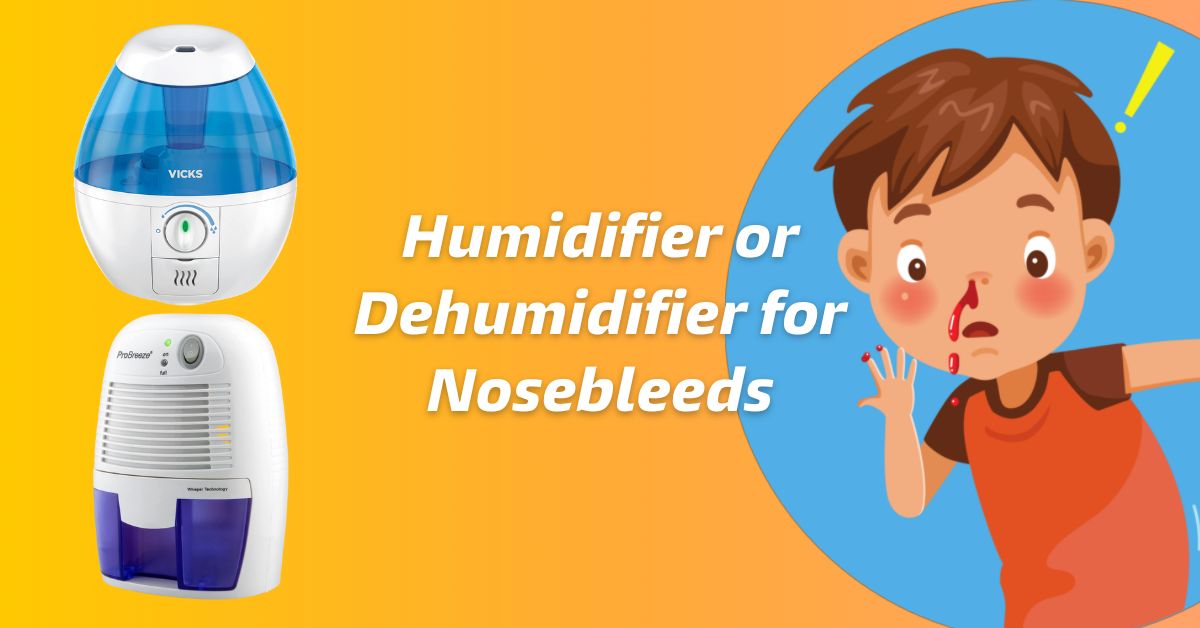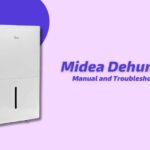Are you tired of dealing with frequent nosebleeds? Maybe it’s time to invest in a humidifier or dehumidifier for nosebleeds. But which one is right for you? Let’s figure it out.
Nosebleeds are common, and almost 60% of people have nosebleeds at some point in their life. However, most nosebleeds can be prevented by optimizing the humidity in the air. Two machines that people generally use to optimize the humidity of their houses are Humidifiers and Dehumidifiers.
If you have nosebleeds and looking to get one of these devices, then you must understand which one will work for you, a humidifier or a dehumidifier.
What Does a Humidifier Do?
A humidifier is a simple device that increases the humidity or moisture in a specific area’s air. Humidifiers are commonly used to avoid dry air in homes and provide comfort from nasal and throat dryness.
Humidifiers are especially useful during the winter because the heaters we use in our rooms dry out the air. People use a variety of humidifiers in different regions, including warm mist humidifiers, cool mist humidifiers, and ultrasonic humidifiers.
What Does a Dehumidifier Do?
As the name implies, a dehumidifier operates in the opposite manner as a humidifier. It removes excess humidity or moisture from a specific room’s air.
People use dehumidifiers to protect themselves from ailments such as respiratory issues, mold and mildew growth, and others. Dehumidifiers are especially useful in the summer when the weather is hot and humid.
Also Read: Humidifier Vs. Dehumidifier
Does Humidifier Help Preventing Nosebleeds?
Yes, a humidifier definitely helps in preventing nosebleeds, especially if it is happening due to a dry nose or cracked skin. A humidifier will maintain the moisture level in the air, which will not only prevent the nosebleed but also prevent dry skin problems, throat problems, cracked skin problems, and more.
According to research, if the humidity level in your home is between 30% to 50%, then it will be ideal for you to have maximum comfort and adequate health.
However, if the humidity is too low, it can cause nosebleeds and other problems like sinuses and dry skin. On the other hand, if the humidity level is very high, it could be even more dangerous as it can surface viruses and bacteria in the air.
Best Humidifiers for Preventing Nosebleeds and Dry Nose
There are various types of humidifiers available in the market that can prevent nosebleeds. However, choosing the right one for you will be a little tricky due to a lot of options.
Furthermore, not all humidifiers deliver the same features and experience. Some of them are highly effective and feature-rich, while others are just gimmick and don’t work in real life.
In the market, there are 2 main types of humidifiers that you can use to prevent nosebleeds. The first one is a cool mist humidifier, and the second one is a warm mist humidifier. Below is a complete breakdown of these two types of humidifiers.
Cool Mist Humidifier
Cool mist humidifiers increase humidity, or moisture, in the air by producing cool mist. It does this by releasing a fine mist of water into the air, which then evaporates and increases the humidity.
Cool mist humidifiers are typically used to improve breathing and relieve the symptoms of dry air, such as dry skin, dry throat, and dry sinuses. They can also be used to alleviate the symptoms of certain respiratory conditions, such as asthma and allergies.
Cool mist humidifiers come in a variety of models, including evaporative, ultrasonic, and impeller variants. Each variety works slightly differently, but they are all intended to enhance the humidity in a room or place.
Warm Mist Humidifier
Warm mist humidifiers are devices that increase the humidity, or moisture, in the air by releasing a warm, visible mist of water into the air. Basically, they boil water and then release the steam into the air after it boils.
Warm mist humidifiers are often used to alleviate the symptoms of dry air, such as dry skin, dry eyes, dry throat, and dry sinuses. They can also be used to alleviate the symptoms of certain respiratory conditions, such as asthma and allergies.
Warm mist humidifiers are typically quieter and may be less expensive to operate than cool mist humidifiers, as they do not require a fan to disperse the mist. However, they do require more energy to operate and may take longer to humidify a room.
Some people also prefer the cooler, refreshing feeling of a cool mist. Warm mist humidifiers are available in a variety of sizes and styles, including tabletop models and larger units that can humidify an entire room or house.
How to Choose a Humidifier for Nosebleeds? (A Buying Guide)
When shopping for a humidifier for nosebleeds, there are several things to consider, like its features, capacity, coverage area, etc. Below is a complete breakdown of factors you should take into account while buying a humidifier for nosebleeds.
Environment
Think about where you will be using the humidifier. If you live in a region where the climate is cold, then you should consider investing in a warm mist humidifier. On the other hand, if you live in a hot climate region, then consider investing in a cool mist humidifier.
Capacity
A humidifier’s capacity relates to how much water it can retain. A larger capacity humidifier will last longer without needing to be refilled, but it will also be bulkier and more expensive.
Furthermore, large tank humidifiers are more likely to cover a larger area than small tank humidifiers. You must ensure that the humidifier can keep water for at least 24 hours.
Usage
The next thing to consider is the usage of the humidifier. If you intend to use it in a child’s room, make sure that it is absolutely safe. Moreover, if you are willing to install a humidifier for plants, you can invest in a cool mist humidifier.
In this aspect, cool mist humidifiers are perfect because they are safe to use in comparison to warm mist humidifiers. Furthermore, an impeller humidifier will be even more beneficial because it will avoid even more accidents.
Cleaning
Regular cleaning is important to keep your humidifier running efficiently and to prevent the buildup of mold and bacteria. Look for a model with an easy-to-clean shape and a built-in cleaning indicator to remind you when it’s time to clean. here are some Best Self-Cleaning Humidifiers Of 2023 you should know about.
Noise Levels
Look for a model with low noise levels if you intend to use the humidifier in a bedroom or other quiet areas. Some humidifiers have a “whisper quiet” setting that is perfect for use at night.
Features
Some humidifiers include extra features such as an air purifier or a night light. You need to consider whether these features are important to you and whether the extra expense is justified.
Budget
Last but not least, the budget is an important consideration. You must first determine how much money you are willing to spend on a humidifier. You should be aware that more expensive humidifiers have more features, are of higher quality, and last longer than less expensive humidifiers.
However, there are numerous brands that provide the same features and quality at a reasonable price. But ultimately, you have to decide whether to get an expensive humidifier or a cheap humidifier.
Conclusion
So, that’s everything you need to know about whether to use a humidifier or a dehumidifier for nosebleeds. Hopefully, you now know which one you should go for.
If you are still unsure, let us know that if you get nosebleeds, you should use a humidifier. This is because nosebleeds are frequently caused by dry air, and a humidifier can maintain humidity while also reducing dryness in the air.





